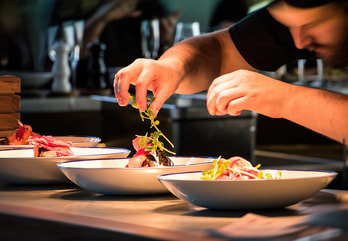 Food costs increase. Rent increases. Labor increases. It’s safe to assume that, over time, your cost of doing business will inevitably go up. When this happens, you have two choices: increase sales, or cut costs elsewhere to offset the rising area. Neither option will bode well with your customer base, but both fare better than the third choice, which is continue as usual until your operation crashes and burns. Whichever route you decide to take, however, it is imperative to communicate the change with your loyalists. Being proactive in times of potential customer setbacks will not only save otherwise lost relationships, but also have potential to actually strengthen your bond with your strongest advocates. Here are some example scenarios where restaurants can stand out during tough times: Communicating Price Increases Restaurant X is a well-known sandwich shop that has attracted a cult-like local following for the past three decades. Sadly, their landlord doesn’t share the same sentimental attachment and demands a significant rent increase. Restaurant X does the math and realizes that based on current sales, it can’t afford these new costs. They have to raise sandwich prices by $1 each, roughly a 15% bump. Restaurant X decides to be up-front with its customers, many of whom have come through its doors for years on end. They post a sign on their menu above the counter that reads something like this: “You’ve probably noticed that our sandwich prices have gone up. We wish we didn’t have to do this either, but our rent went up, and this is the only way for us to stay in business and continue our dream of serving you every day. Thank you and let us know if we can answer any questions.” Simple and to the point, without causing any unnecessary drama with the landlord. Will this approach prevent alienation from every customer? Likely not, but it’ll certainly minimize the bleeding. By hearing the news straight from the horse’s mouth, Restaurant X has halted any false accusations from spreading around its price increases. "Much better to tell your loyalists the story in the way you want it to be told rather than have them make up a defamatory story in their minds." Alternatively, and to supplement the first approach, if Restaurant X doesn’t want to alert every customer [i.e. first-timers] that they used to have lower prices, then it’s best to reach their loyalists through other channels. Email lists and social media pages are prime for these types of announcements.
Communicating Menu Changes Personal opinion, but always opt for price increases before cost cutting, barring true inefficiencies or redundancies in your operations. Your brand is built around an enjoyable, reliable product and experience, and detracting from taste, portion size or ambiance are all one-way tickets to destroying your brand. This said, sometimes a menu change is necessary for reasons out of your control. Restaurant Z sells a very popular almond-crusted salmon. Drought conditions, however, have made almonds a very unpopular ingredient, especially with the owners of Restaurant Z, who are strong environmental advocates. They decide to change the dish to herb-crusted salmon, knowing that this will create some noticeable backlash. In their daily pre-service staff meeting, the owners discuss the change with managers and servers, and train the servers on an opening dialogue and anticipated FAQ’s that loyalists will likely have regarding the change. The servers are now fully equipped with the ability to be forthcoming about a change in a popular menu item and how it aligns with the environment and what the restaurant stands for in the end. Just like with the previous example, this approach won’t please everyone, but will surely help your customers get on the same page and empathize with the decision. Much better to tell your loyalists the story in the way you want it to be told rather than have them make up a defamatory story in their minds. These approaches are largely interchangeable, but fall under the same central themes:
Communicating less-than-ideal matters isn’t the most comfortable thing, but in the same way that the success of a romantic relationship depends on communication, so does that of your business
0 Comments
Leave a Reply. |
AuthorBenjamin Brown is a seasoned restaurant writer and hospitality consultant, serving up SoCal's hottest food news and reviews. Categories
All
Archives
June 2021
@Foodie_Biz |
|
Home
About
Blog
Consulting Tips
Contact
Legal
|
Foodie Biz provides restaurant news and reviews for the food community, as well as consulting advice for restaurant owners and other hospitality professionals.
Contact Foodie Biz for media opportunities and freelance consulting projects. Contact Foodie Biz |



